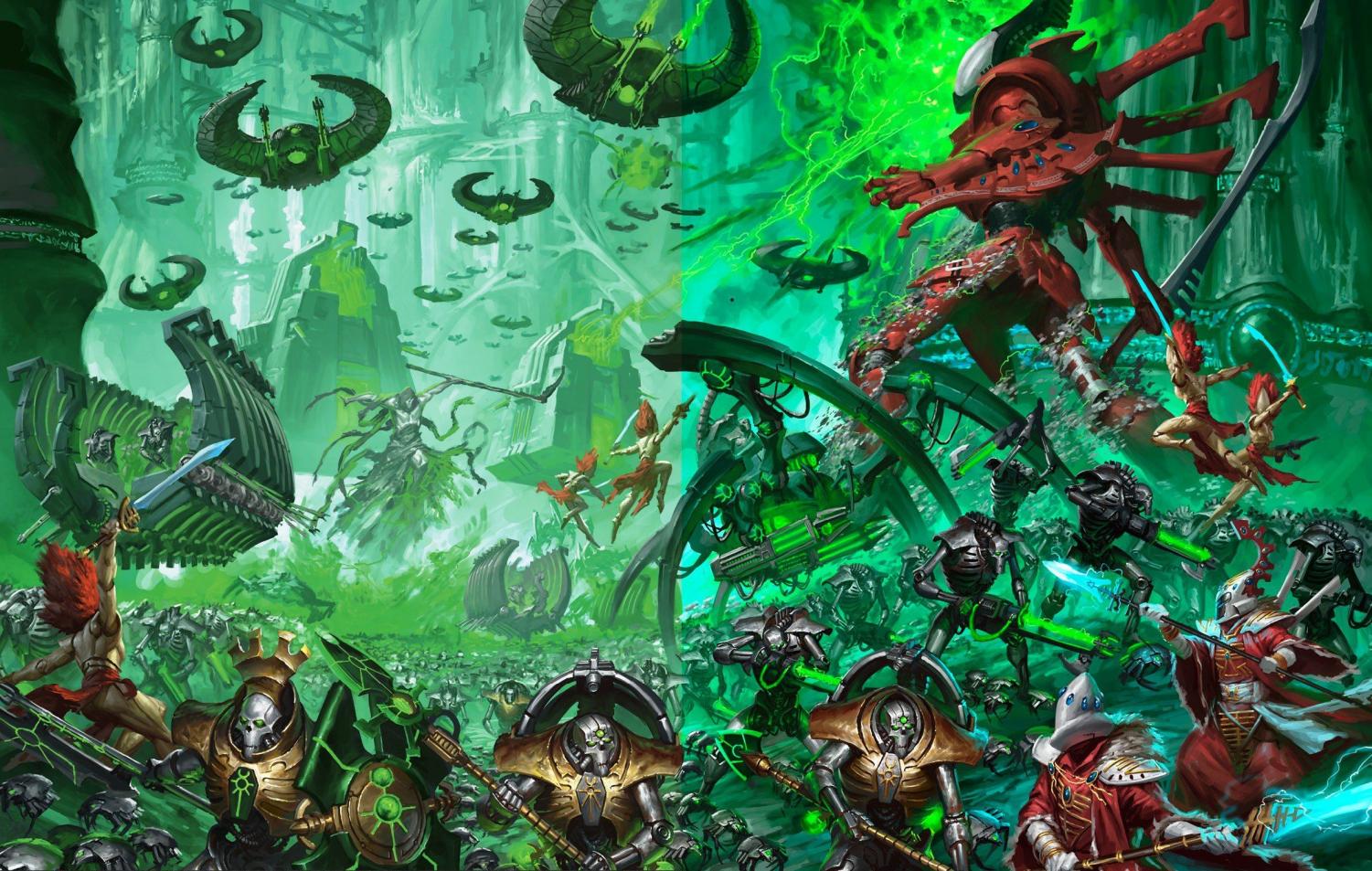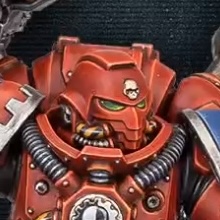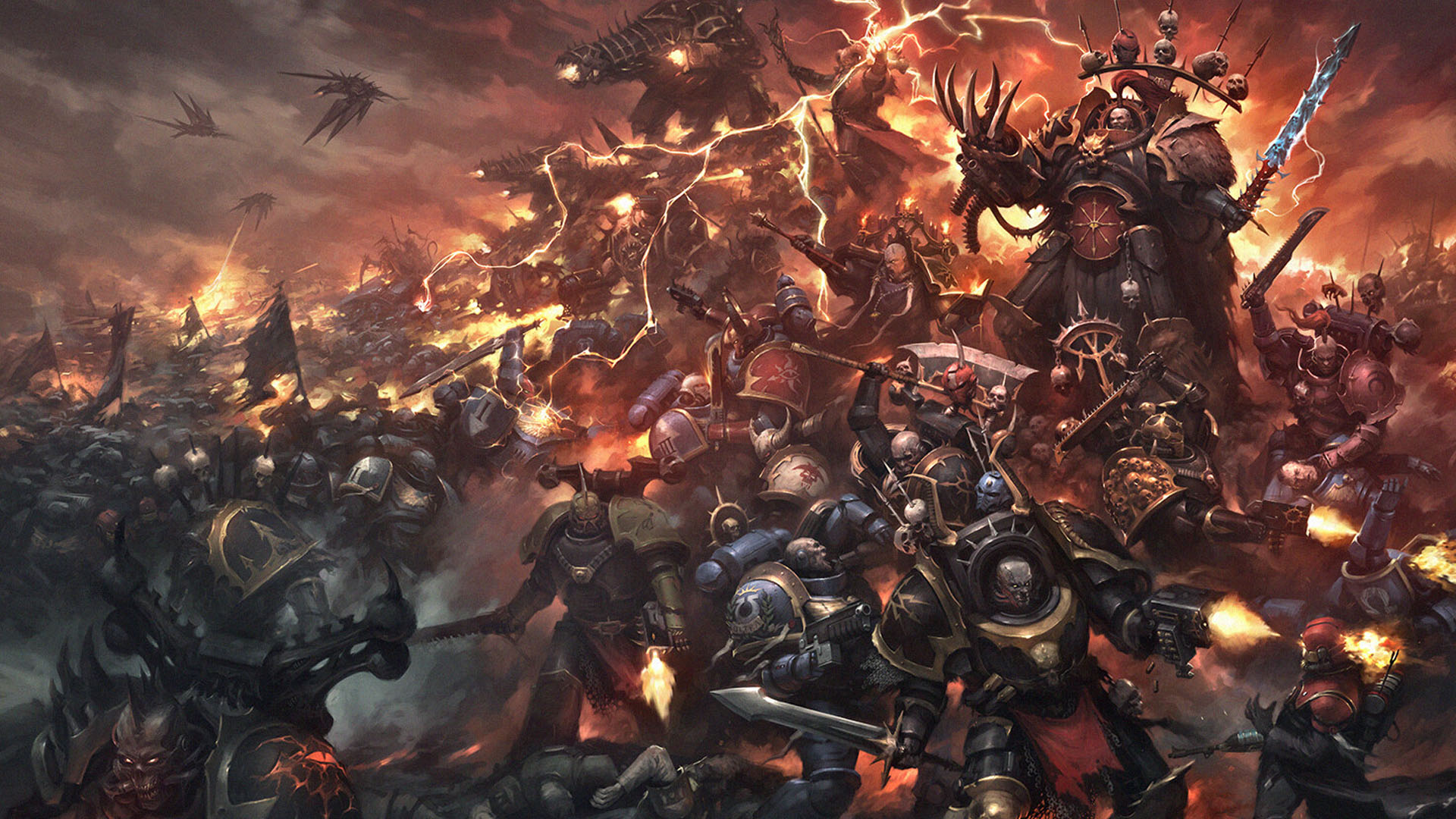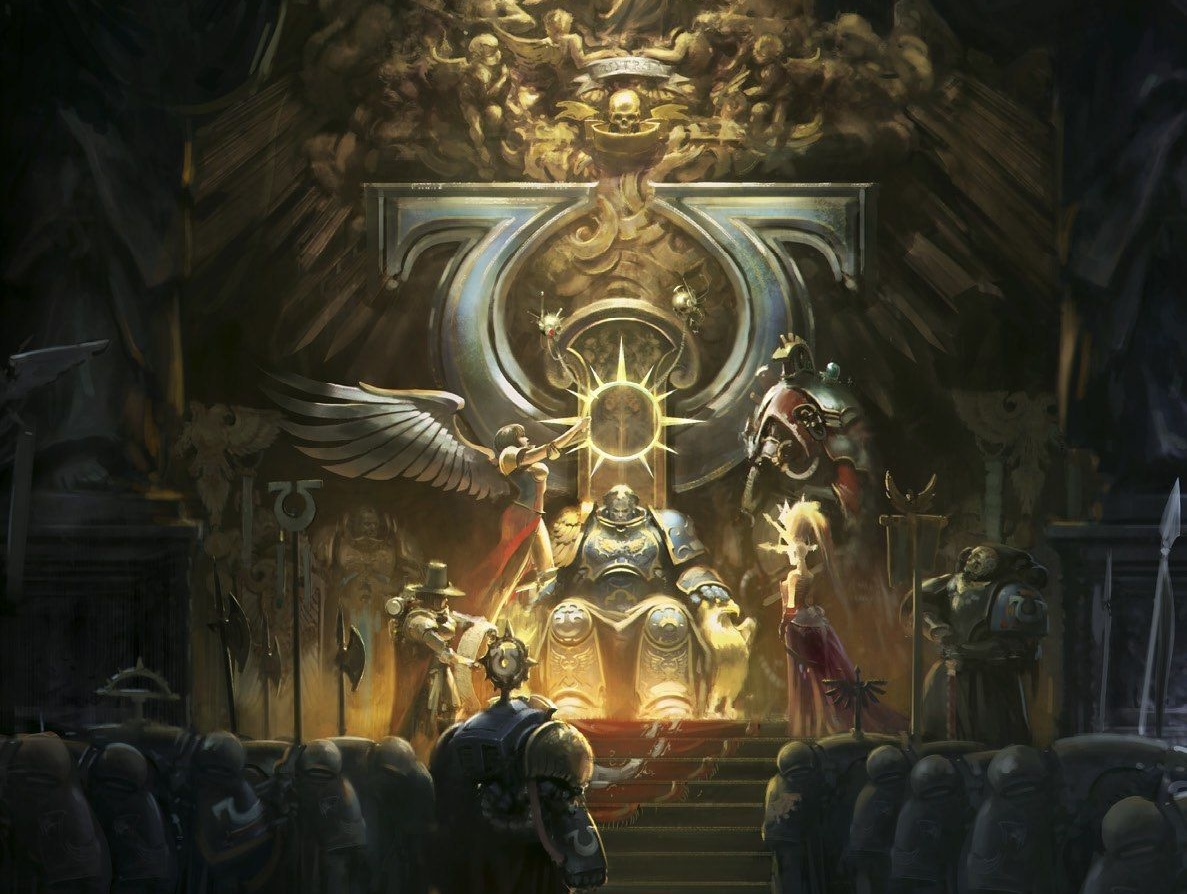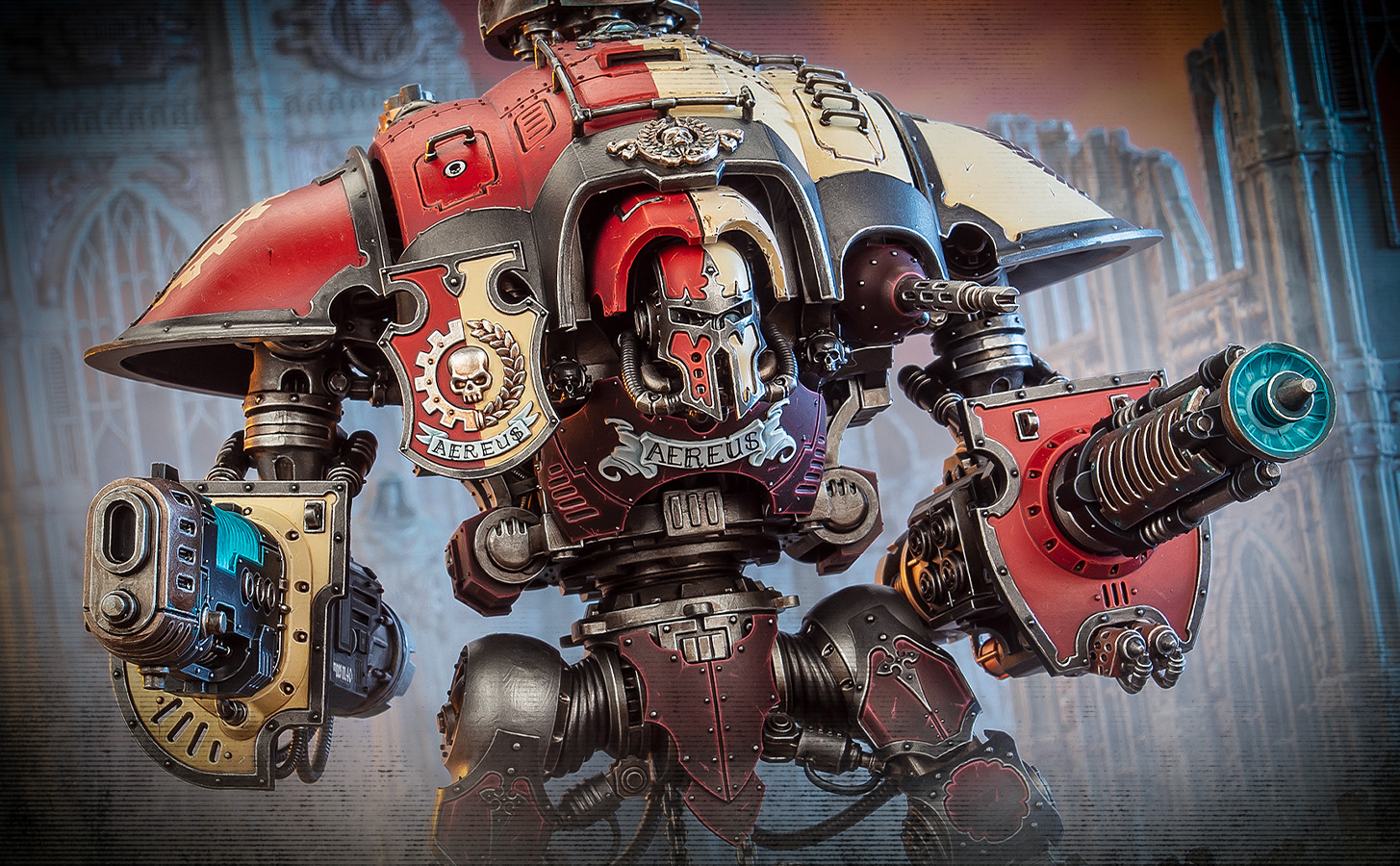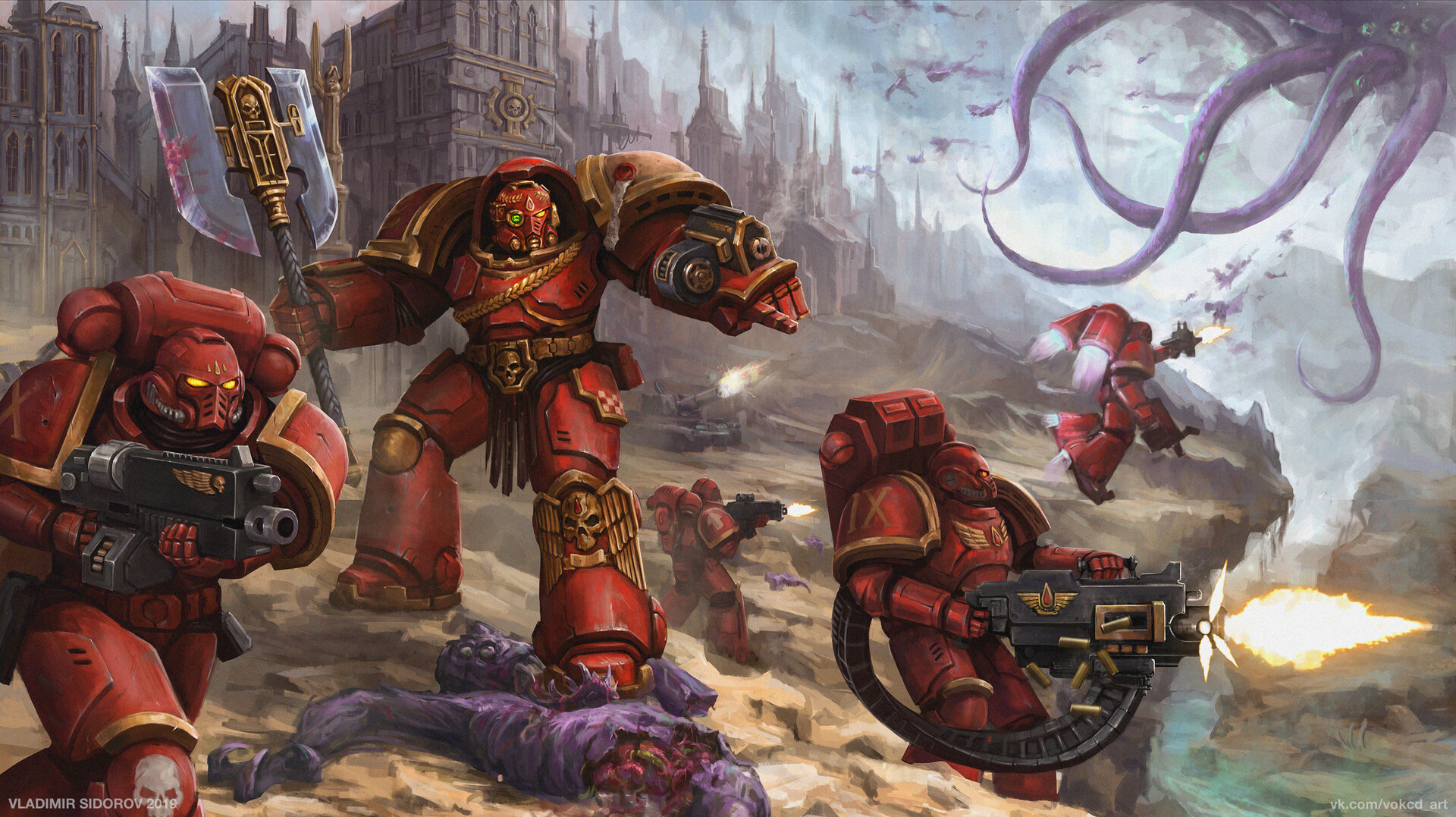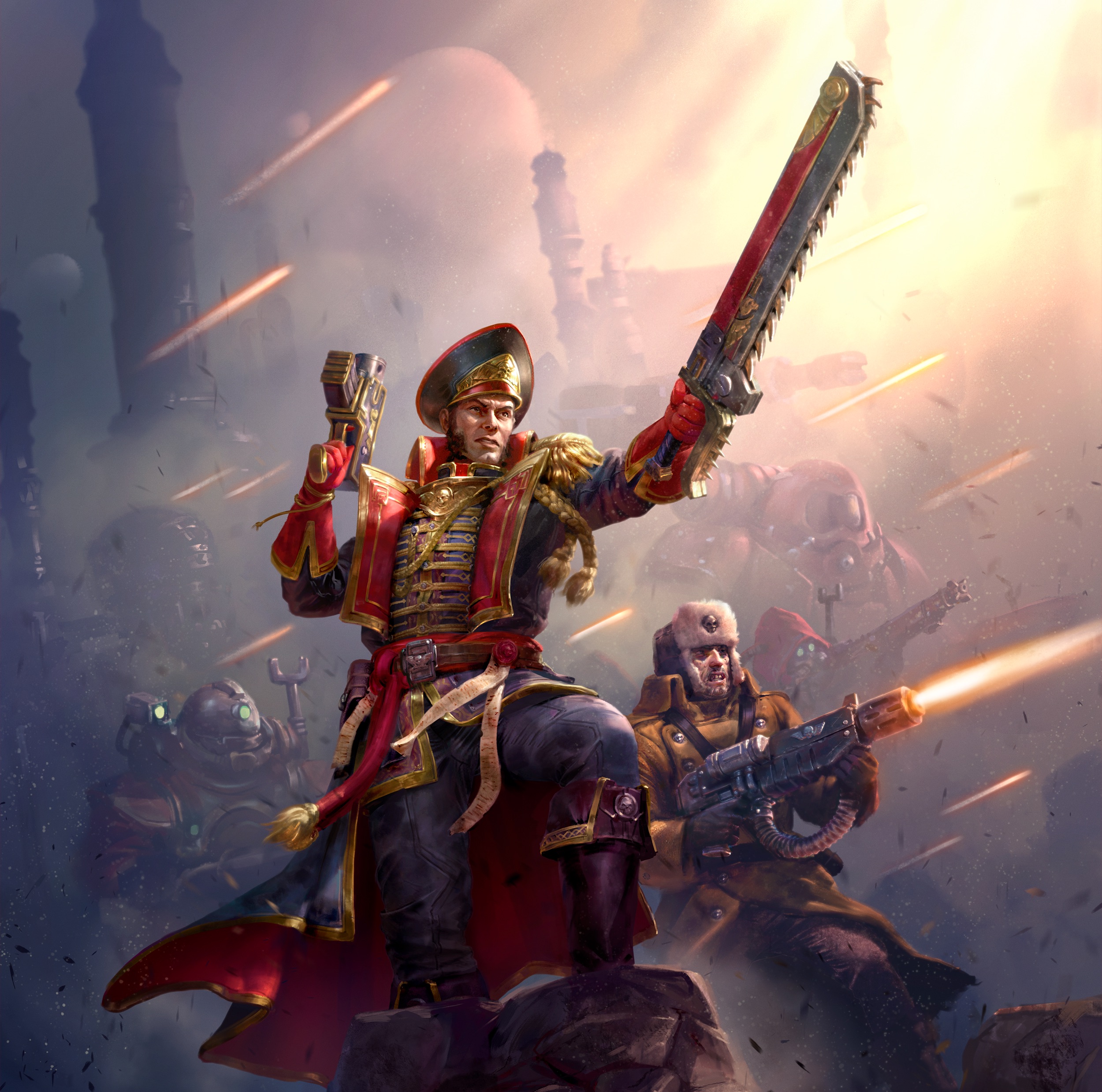In the grim darkness of the far future, humanity stands alone against a galaxy full of merciless aliens. The Imperium of Man views all xenos (alien) species as a fundamental threat to human survival, an enemy that must be destroyed without hesitation.
Ever since its founding, the Imperium’s guiding policy has been the extermination of any intelligent alien race that poses a danger to Mankind. Imperial historians record countless xenocides — one alien species after another wiped out in the name of humanity’s survival.
This ruthless xenophobia is fueled by harsh experience: almost every alien species humanity has met has been hostile beyond reason, making negotiation or coexistence impossible. To the Imperium, “suffer not the alien to live” is not just dogma but a necessity in a galaxy where only the ruthless endure.
Orks: The Green Tide of Eternal War
The Orks are a nightmare made flesh – an endless horde of hulking, green-skinned brutes who live only for war and slaughter. Primitive, brutal, and hyper-violent, Orks rampage across the stars in massive WAAAGH! warparties, fighting anyone and everyone (including each other) for the sheer joy of battle.
They are so numerous and aggressive that they infest countless worlds like a plague, spreading via hardy spores that make them nearly impossible to eradicate. In fact, Orks may be the one species truly immune to extinction – killing an Ork just scatters the seeds of future Orks.
Each Ork is tough and strong, and collectively they’re the most widespread race in the galaxy. Fortunately for the Imperium, Ork clans usually fight amongst themselves as much as they attack others. But whenever a powerful Warboss unites them into a great WAAAGH!, the Ork tide becomes an almost unstoppable force.
Imperial scholars grimly note that if the Orks ever fully united as one, they would “crush all opposition”, overrunning humanity and every other race beneath an endless green tide. For the Imperium, the Orks represent unending war personified – a foe that can never truly be extinguished, only fought until one’s last breath.
Aeldari: The Dying Lords of a Fallen Empire
The Aeldari (also called Eldar) are an ancient race of aliens whose time of glory has long passed into nightmare and ruin. Millennia ago, the Eldar ruled a vast galactic empire, their psycho-technological mastery and psychic powers far surpassing those of any human.
But their greatness led to hubris and ultimate catastrophe – the Fall of the Eldar – which shattered their empire and birthed a hellish god of excess that forever curses their souls. Now the surviving Eldar exist as a dying people, scattered aboard isolated craftworld ships, desperately clinging to the remnants of their culture. They are refined and impossibly advanced, yet haunted by despair.
To humans, Eldar often appear arrogant and aloof, regarding mankind as upstart barbarians – after all, it was the Eldar’s downfall that inadvertently allowed the Imperium to rise. Though few in number, the Eldar can strike with frightening speed and precision, using their far-seeing Farseers to guide them. At times they even ally with the Imperium to combat greater threats like Chaos or Tyranids, but only when it serves their inscrutable ends. Each encounter with the Eldar reminds humanity that these aliens once owned the stars – and that they would gladly see mankind fall if it meant preserving their own fading souls.
Drukhari (Dark Eldar): Not all Aeldari seek redemption or survival through austerity. The Dark Eldar, or Drukhari, are the depraved cousins of the craftworld Eldar, and they embody the cruelty and arrogance of the ancient Eldar at its darkest extreme.
Hiding in the labyrinthine city of Commorragh deep within the Webway dimension, the Drukhari have forsaken any pretense of honor or restraint. They sustain themselves through pain and suffering, raiding realspace to capture countless victims for torture, slavery, and horrific experimentation. The Dark Eldar revel in atrocities that would curdle an Imperial citizen’s blood – for them, inflicting agony is both art and sustenance.
To the Imperium, there is little practical difference between Eldar and Dark Eldar; both appear as dangerously alien and supremely deadly. A Drukhari raid on a human world is a nightmare come true: cities emptied overnight, their populations dragged into nightmare realms of torment.
The Eldar as a whole – whether the somber craftworld refugees or the sadistic pirates of Commorragh – represent a lesson in despair for humanity. They are a dying race driven to extremes by their own tragic history, and in their struggle to escape oblivion, they remind mankind that there are far worse fates than death in the cold void of space.
Necrons: The Undying Machine Legions
From the black depths of forgotten tomb worlds emerge the Necrons – eerie, undying machine overlords from the galaxy’s most distant past. The Necrons are so ancient that even the Eldar recall them only as half-myth, and their technology is so advanced it appears to defy reality itself.
Sixty million years ago, these beings traded their mortal flesh for immortal metal, becoming skeletal androids driven by a desire for dominion. For eons they slumbered in stasis beneath the soil of countless worlds, but now they are awakening, and all life trembles at their return.
When a Necron dynasty rises, silent legions of living metal march forth with implacable purpose. Gauss weapons strip flesh from bone in an emerald glow, and Monolith war machines blot out the sun. The Necrons seek nothing less than to reclaim the stars they once ruled unchallenged, purging or enslaving the “lesser races” (like humanity) that have usurped their former realms.
They feel neither pity nor rage – only cold, inhuman contempt and an absolute confidence in their inevitable triumph. It is said that Necrons are virtually indestructible; even if smashed apart, their bodies can self-repair, and slain units simply vanish, only to reappear later fully restored.
How does one kill what is already dead? The Imperium has no easy answer. Instead, its soldiers fight desperately to delay or contain the Necron threat, praying that these ancient masters do not awaken in numbers too great to stop.
The Necrons embody the inescapable doom of the future – an enemy that cannot be reasoned with or permanently slain, rising again and again until the galaxy is scoured clean of human life.
Tyranids: The All-Devouring Swarm
If Orks exemplify endless war for its own sake, the Tyranids represent an even more terrifying threat: an insatiable super-organism that exists only to feed. The Tyranid race is not a civilization at all but a extragalactic swarm of bio-engineered creatures, collectively controlled by a hivemind, that has descended upon our galaxy to consume every last shred of biomass.
From tiny, scuttling Rippers to city-sized Hive Ships, every Tyranid organism is a living weapon perfectly evolved for relentless predation. They arrive in gargantuan Hive Fleets that blot out the stars, preceded by tendrils of smaller swarms that soften up prey worlds.
Once a Tyranid swarm invades a planet, the skies rain spores and the ground heaves with countless horrors: chitinous monstrosities, swarms of razor-clawed Gaunts, titanic bio-Titans – a writhing tide of teeth and talons with no mercy, no fear, and no individuality.
Their sole purpose is to kill, devour, and evolve. The Tyranids strip a world of all life, sucking up oceans and topsoil, leaving behind a lifeless husk before moving on. Worst of all, with each battle the Tyranids adapt and grow stronger, mutating new bioforms to counter whatever resistance they faced.
Every hard-won Imperial victory against a Hive Fleet is temporary – new swarms soon pour in, stronger than before. Imperial xenobiologists now fear that the Hive Fleets encountered so far may only be the vanguard of a much larger infestation still approaching from the intergalactic void. If that is true, the Imperium stands on the brink of an apocalypse, facing a foe that quite literally intends to consume humanity to the last. Against the Tyranids, there can be no negotiation or surrender – only total war until either the swarm is stopped or mankind is devoured.
T’au Empire: The False Hope of the Greater Good
In the darkness of the 41st millennium, the young T’au Empire shines like a deceptive beacon of hope – an alien regime that speaks of unity, progress, and the “Greater Good,” yet is no less a danger to humanity’s future.
The T’au are a blue-skinned, humanoid species from the galaxy’s Eastern Fringe, relatively new on the galactic stage compared to the other ancient xenos. In only a few thousand years, they have developed highly advanced technology and forged an expanding interstellar empire.
Unlike the brutal Orks or hungry Tyranids, the T’au prefer to conquer through a mix of diplomacy, assimilation, and precise warfare. They earnestly invite other species to join their Greater Good – a seemingly noble ideal of collective harmony and progress. Indeed, many human worlds at the Imperium’s ragged borders have been tempted to defect and embrace the T’au way, trading the oppression of Imperial rule for the promise of enlightenment under alien guidance.
But the Imperium denounces this as a treacherous false hope. To Imperial eyes, the T’au’s smiles hide an insidious threat: they would subvert humanity from within, weaken our loyalty to the God-Emperor, and ultimately dominate us under their orderly but alien system. And make no mistake, the T’au are willing to use force if persuasion fails – their armies field advanced battlesuits and deadly energy weapons that have cut down Space Marines and tanks alike.
Though small in galactic terms, the T’au Empire grows with each generation, pushing at the frontiers of Imperial space. If left unchecked, they could overrun vast swaths of the Imperium’s outer territories. In the grim darkness of the far future, idealism itself can be a weapon, and the T’au’s optimistic vision is a knife aimed at the Imperium’s heart. Humanity learns the hard way that even an alien offering peace can ultimately bring ruin.
Other Xenos Horrors
Beyond the well-known major factions, the galaxy teems with countless other xenos races, each a unique peril to mankind. The Imperium catalogs these lesser-known aliens as mere footnotes in obscurity or as myths – until they strike. Some of these include:
Genestealers
Vicious, four-armed Tyranid infiltrators that act as the harbingers of Hive Fleet invasions. Genestealers secretly invade human worlds, using stealth and infection to create hidden cults among the population. They corrupt humans with their alien gene-seed, turning entire colonies into devoted puppets of the Tyranids. When the Hive Fleet draws near, the cultists rise up and sabotage their own world from within, ensuring it is easy prey for the swarm.
Genestealers are frighteningly intelligent and patient – a single creature can lurk for decades, spreading its taint until an entire planet is on the brink of rebellion and bio-purging. The Imperium fears Genestealer infestations deeply, for no world can ever truly be secure if the xenos curse can grow unseen in its underbelly.
Hrud
An elusive, parasitic species often whispered of in folk tales and rarely seen clearly. The Hrud are shadowy, subterranean scavengers sometimes likened to “space skaven” or boogeymen. They lurk in the darkness under hive cities and abandoned tunnels, shrouded by a disturbing aura that accelerates decay and aging in nearby living things. This means human soldiers growing old and weak in moments, weapons rusting to uselessness, infrastructure crumbling – all just by the Hrud’s presence.
They migrate in hidden colonies, “infesting” worlds undetected until the area literally withers away. Imperial records are conflicted on their true appearance (some depictions show them as ragged rat-like humanoids, others as insectoid wraiths), but all agree that a Hrud infestation is a dire threat.
The Imperium often only learns of Hrud activity after entire regions fall to ruin. Exterminating them is infamously difficult, like trying to catch shadows. Nonetheless, the Inquisition has declared the Hrud a dangerous xenos that must be purged whenever found.
Rak’Gol
Savage marauders from the fringe of Imperial space, the Rak’Gol are reptilian monstrosities that embody mindless brutality. Towering over humans with multiple limbs and crude cybernetic augmentations, Rak’Gol packs raid outlying colonies and voidships without warning or mercy.
Imperial survivors describe these aliens as near-primal cannibals, literally tearing apart and devouring anyone they encounter. Their technology is ramshackle but effective – brutal blades, mass-produced guns, and spiked spacecraft that smash into their targets.
No Rak’Gol has ever been captured or communicated with; they attack on sight, seemingly without motive beyond slaughter and theft. In the Koronus Expanse (a lawless region at the Imperium’s edge), the mere mention of the Rak’Gol is enough to send colonists into panic. They strike from the darkness of voidspace and disappear just as quickly, leaving only blood and wreckage. Though a localized threat for now, the Rak’Gol demonstrate that even on the galaxy’s margins, humanity is never safe from alien horrors.
These are but a few examples among many. Other xenos – from the shape-shifting Enslavers that invade minds, to the spectral Enoulians, the insectoid Thri’loks, or the mercenary Kroot that serve the T’au – all present unique dangers. Each alien species, no matter how minor, is a deadly puzzle the Imperium must solve or a flame that must be snuffed out.
In a universe so hostile, even “minor” xenos can topple worlds if underestimated. Humanity stands atop a mountain of skulls of extinct aliens, yet new monsters are always crawling out of the dark corners of the galaxy.
Survival at All Costs: The Imperium’s War on Xenos
Confronted with such varied and unrelenting threats, the Imperium of Man has embraced a policy of total war against all non-humans. There is no diplomacy with xenos (save rare, desperate exceptions); the default response is to exterminate them on sight.
The Imperium maintains entire organizations devoted to hunting aliens – for example, the Space Marines of the Deathwatch and the Inquisition’s Ordo Xenos – and it routinely deploys armies of the Astra Militarum and Battlefleets to cleanse worlds infested by alien filth.
When even these forces are not enough, the Imperium will not hesitate to unleash the ultimate sanction: Exterminatus, the complete destruction of a planet’s surface and all life upon it. Imperial commanders would rather reduce a world to ash than let it fall into xenos hands.
This fanatical exterminationist stance was set down by the Emperor Himself during the Great Crusade, when human legions wiped out dozens of species deemed a threat. Across history, the Imperium has committed genocide after genocide in the name of survival.
In the cold logic of the Warhammer 40K universe, this bloody-mindedness is tragically justified: if humanity shows mercy or hesitation, the xenos will exploit it and humanity will perish. The Imperium’s cruelty is thus born of existential fear. Every dead alien is one less potential conqueror, one less population that could harbor a Genestealer cult or make pact with Chaos.
The Imperial Creed teaches that the alien is corrupt by nature, an affront to the God-Emperor’s design. Hatred of xenos is practically a religion, preached from the pulpit: “Trust not the alien, for its soul is unknowable and its existence a blasphemy.” Mankind’s continued survival in this nightmarish future depends on unceasing vigilance and uncompromising violence. It is a war of annihilation, with no end in sight.
Eternal War, Xenophobia, and Despair – The Core of the 41st Millennium
Each of these xenos factions – major or minor – embodies a facet of the core themes of Warhammer 40,000: endless war, the struggle for survival, utter xenophobia, and cosmic despair.
The Orks illustrate war as an inescapable fact of life – for them war is life, a barbaric joy that will grind on forever, making a mockery of hope for peace.
The Aeldari reflect the weight of despair: once masters of the galaxy, now clinging to survival, their arrogance and past sins haunt them with literal demons of their own making.
The Necrons are a vision of inevitable doom, a remorseless fate that cannot be reasoned with – they are death itself given form, a reminder that time will kill all civilizations, even our own.
The Tyranids reduce the struggle for survival to its most primal level: they are the hunger that can never be sated, an all-devouring force that cares nothing for pride or hate, only the brute reality of eat or be eaten.
The T’au, meanwhile, demonstrate how even hope and unity can be twisted in the grimdark future – their optimistic quest to save the galaxy could be seen as a glimmer of light, but the setting of 40K turns it into another source of conflict and mistrust, a “false dawn” destined to be swallowed by the darkness.
Every lesser xenos, from the lurking Hrud to the rampaging Rak’Gol, adds to the atmosphere of constant dread – humanity is truly alone, surrounded by predators and nightmares of every shape. In this universe, xenophobia isn’t just prejudice; it’s a brutally practical stance when every alien really is out to get you.
And so, in the grim darkness of the far future, there is only war. The Imperium of Man stands bloodied but unbowed against impossible odds, its billions of soldiers fighting and dying on a thousand worlds at any given moment. There is war, because every species believes it must conquer or perish. There is survival – cruel, costly, moment-to-moment survival – as the highest imperative, because no one, human or alien, can ever let their guard down. There is xenophobia, institutionalized and absolute, because trust is a currency that literally no alien has earned in 10,000 years of unending carnage. And there is despair, the quiet acknowledgement that for all these efforts, the galaxy grows darker with each passing century – every victory is pyrrhic, every reprieve temporary.
Yet in that despair, humanity finds a defiant strength: if we are doomed, we will rage against the dying of the light with bolter and chainsword in hand, making the aliens pay for every bloody inch. Warhammer 40K’s bleak universe holds a twisted mirror to our fears – a cosmos where peace is a dream and only war remains.
Each xenos race is an avatar of some terrible fate awaiting mankind, and the Imperium’s response is as simple as it is draconian: fight, kill, burn, and endure, until the final darkness takes us. In the end, the presence of these alien horrors reinforces the setting’s ultimate truth: there is no hope in the grim darkness – only the laughter of thirsting gods and the roar of eternal battle.
